Treehouses: The homes that almost hover in the air, and the people who live in them
The scene of both Odysseus’s marriage bed and Queen Victoria’s tea parties, treehouses have long enchanted us. Bronwen Riley explores the dizzy heights of tree-top living.
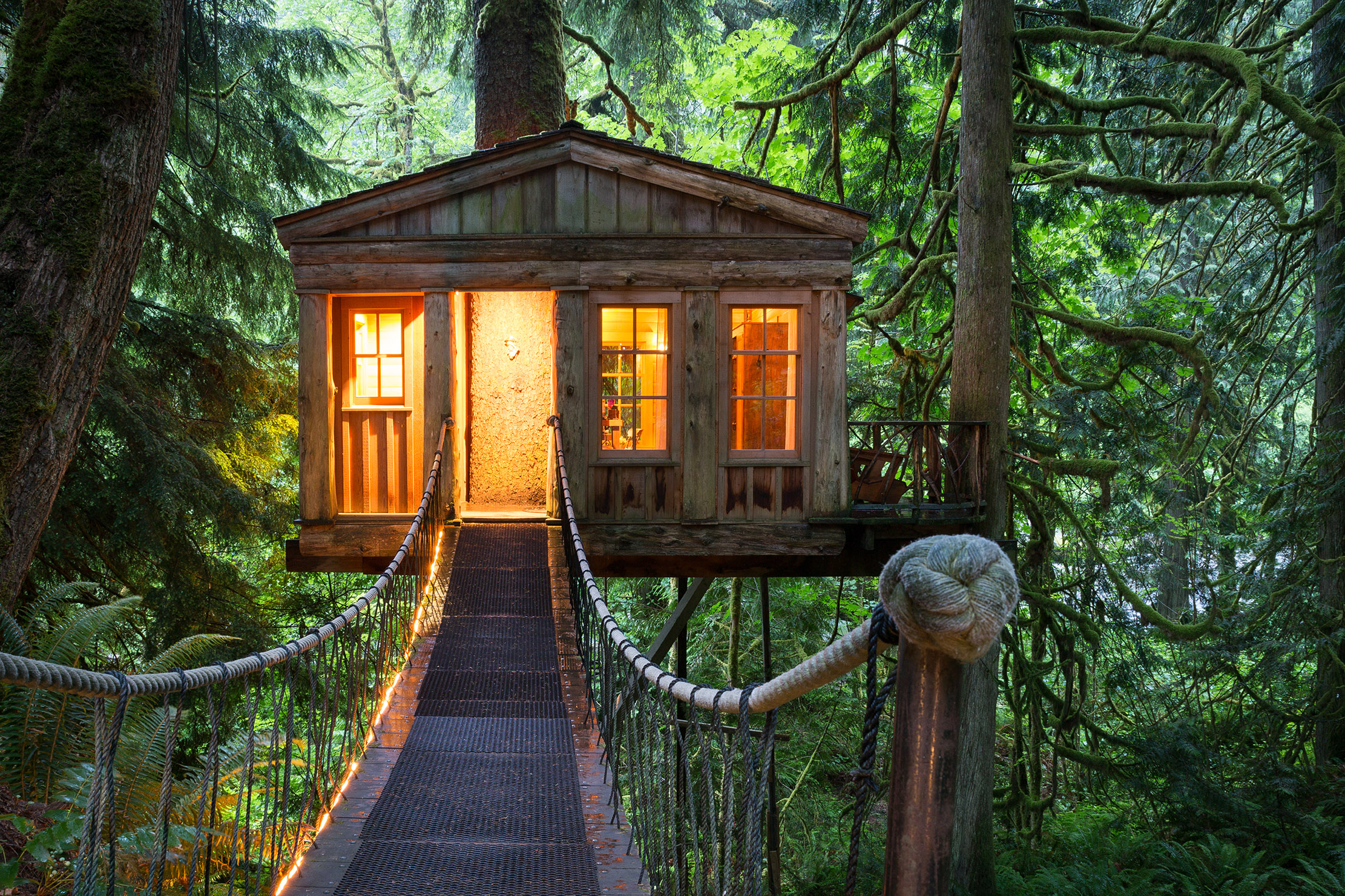

It is hard to think of a dwelling better suited to these socially distanced times than a treehouse. There has been a huge surge in demand for glamping, but treehouses have, quite literally, always been at a higher level of experience.
Less the preserve of the backwoodsman than of the aesthete and aristocrat, they have, throughout history, more often been built for the pleasure or repose of parents than for the amusement of their children.
In classical and Renaissance Europe, treehouses delighted by their perfect combination of Nature and artifice. Odysseus’s matrimonial bed was skilfully and secretly fashioned out of a living olive tree and Emperor Caligula enjoyed dining among the branches of an enormous plane tree in a room he nicknamed ‘the nest’, which accommodated 15 guests, servants and his own corpulent frame.
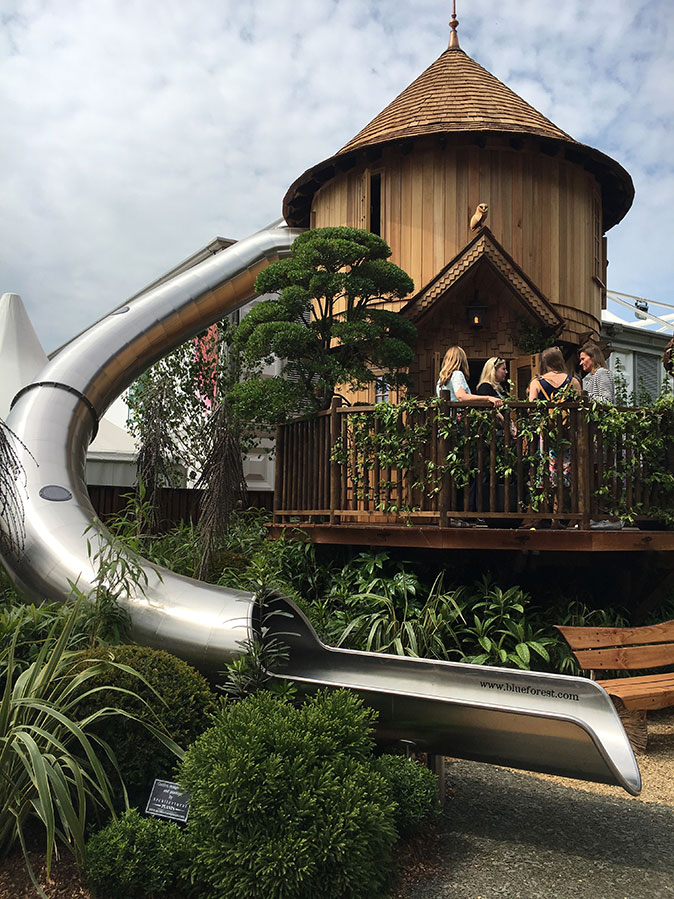
Elizabeth I also admired arboreal banqueting houses, such as the one prepared for her visit to Cobham Hall, in 1559, ‘with a goudlie gallerie... composed all of greene with severall devices of knotted flowers supported on each side with a faire row of hawthorn trees, which nature seemed to have planted there on purpose’.
As a 13-year-old, the future Queen Victoria took tea in the treehouse at Pitchford Hall, Shropshire (first documented in the 1670s and today laying claim to being the world’s oldest treehouse).
Later in the century, her granddaughter Marie, the last Queen of Romania, commissioned Arts-and-Crafts architect Baillie Scott to design a treehouse in the grounds of Peles Castle, the Romanian royal family’s Carpathian retreat. Suspended across giant firs, the ‘Princess’s Nest’ was reached up the stairs of a wooden belfry, from which a drawbridge was let down.
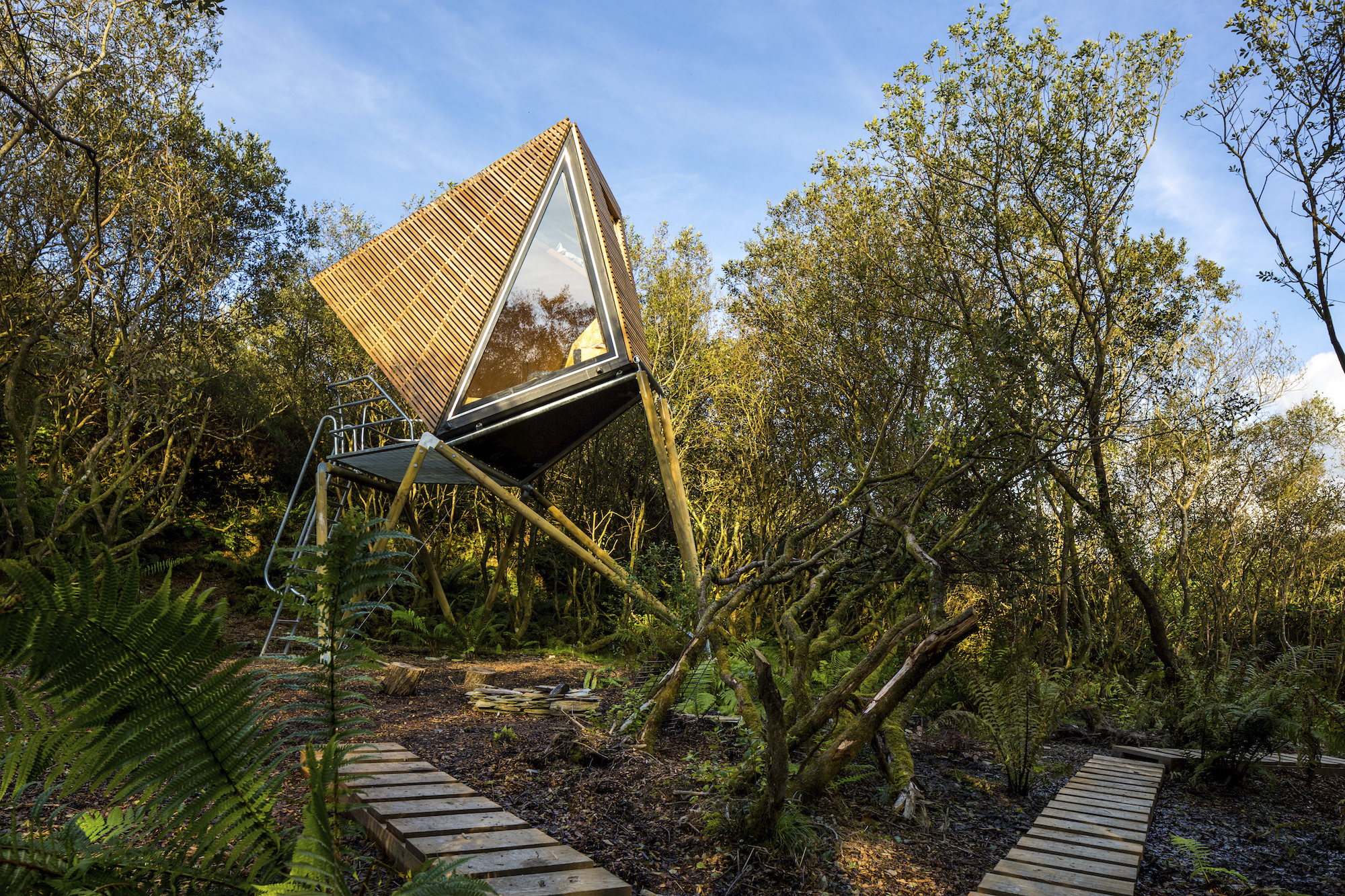
One wonders what flamboyant Queen Marie would have made of her eccentric contemporary, Lady Sybil Grant, an avid fortune teller and licensed hawker, who, finding her husband and the ghosts at Pitchford too gloomy, decamped to its orangery and treehouse, from where she maintained a socially distanced marriage by communicating with her husband in his bedroom back at the hall by means of megaphone and semaphore.
Sign up for the Country Life Newsletter
Exquisite houses, the beauty of Nature, and how to get the most from your life, straight to your inbox.
But treehouse living is far from being a thing of the past — here are some people make the most of it today:
Ben Huggins, Trebarwith Strand, Cornwall
‘I’ve always been interested in how treehouses function as buildings and I designed my kudhvas (Cornish for hideouts, pictured at the top) to share their aesthetic,’ says architect Ben Huggins. ‘If you look at something from an elevated position, the world seems different — somehow, the ordinary becomes extraordinary.’
He came up with the design when asked to masterplan an off-grid campsite in a disused Cornish slate quarry. His brief was to create a space in which to sleep, contemplate and be snug and that each hideout — perched some 8ft off the ground and only 10ft wide by 10ft high — should have sea views, but be hidden from plain sight.
Ben is no fan of mainstream glamping: ‘I find that it is often a saccharine approach to placemaking. A decade ago, a shepherd’s hut or tipi seemed novel, but now you can buy them off the peg, they’ve become mainstream. It’s becoming difficult to be noticed and to be different.’ Which cannot be said of his kudhvas.
Guy and Mark Hoare, Saxtead Green, Suffolk
After 11 weeks of lockdown isolation in London, theatrical-lighting designer Guy Hoare moved to Suffolk to help tutor his five young nephews and nieces. Greatly adding to the novelty and success of the visit — he stayed for seven weeks — was his residency in a treehouse, which his architect brother, Mark, built largely from materials lying to hand.
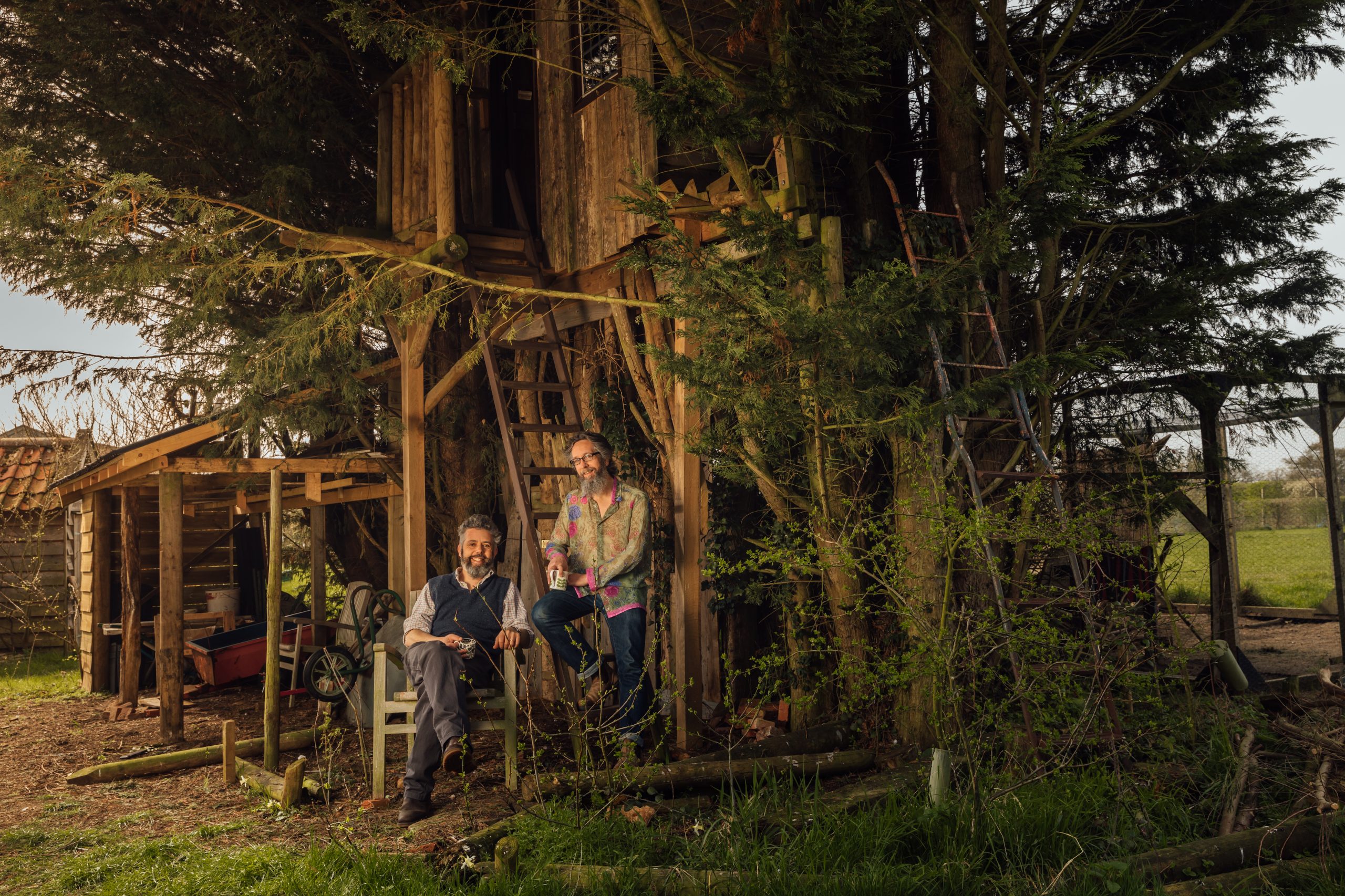
Although assembled quickly, there is a hallmark wit in the details and careful use of natural materials: the walls are insulated with reeds and lime plastered, the leaded windows rescued from a skip. Guy was particularly happy to find his camp bed made up with his childhood Snoopy duvet and pillowcase.
There were no matching curtains, however: ‘It was midsummer, the main window faced east and the balcony overlooked the hen coop where the chickens woke at about 5am.
'At first, I used a face mask and ear plugs, but soon I simply embraced the light and woke up naturally at sunrise. I felt so much more energised. Windows naturally frame a view and when that view is across the trees of the structure you have become part of, it is just gorgeous.
‘Mostly, the weather was good, but, in the wind, the house creaked and moved like a boat, which was beautiful, especially as I hadn’t been able to sail for a while. One day, I had a Zoom meeting and our stage director could hear the creaking and asked if we could record it for a show we are working on.’
Jason Gathorne-Hardy, Great Glemham, Suffolk
Sitting in a grove of sweet-chestnut trees, Jason Gathorne-Hardy’s Wildwood Hut is inspired by the farm huts or lepo in the Kelabit Highlands of his beloved Sarawak, Malaysia.
It stands on a promontory overlooking the farm and pastures of the Upper Alde Valley, which, being 40ft higher, almost counts as a hill in Suffolk, as Jason points out.
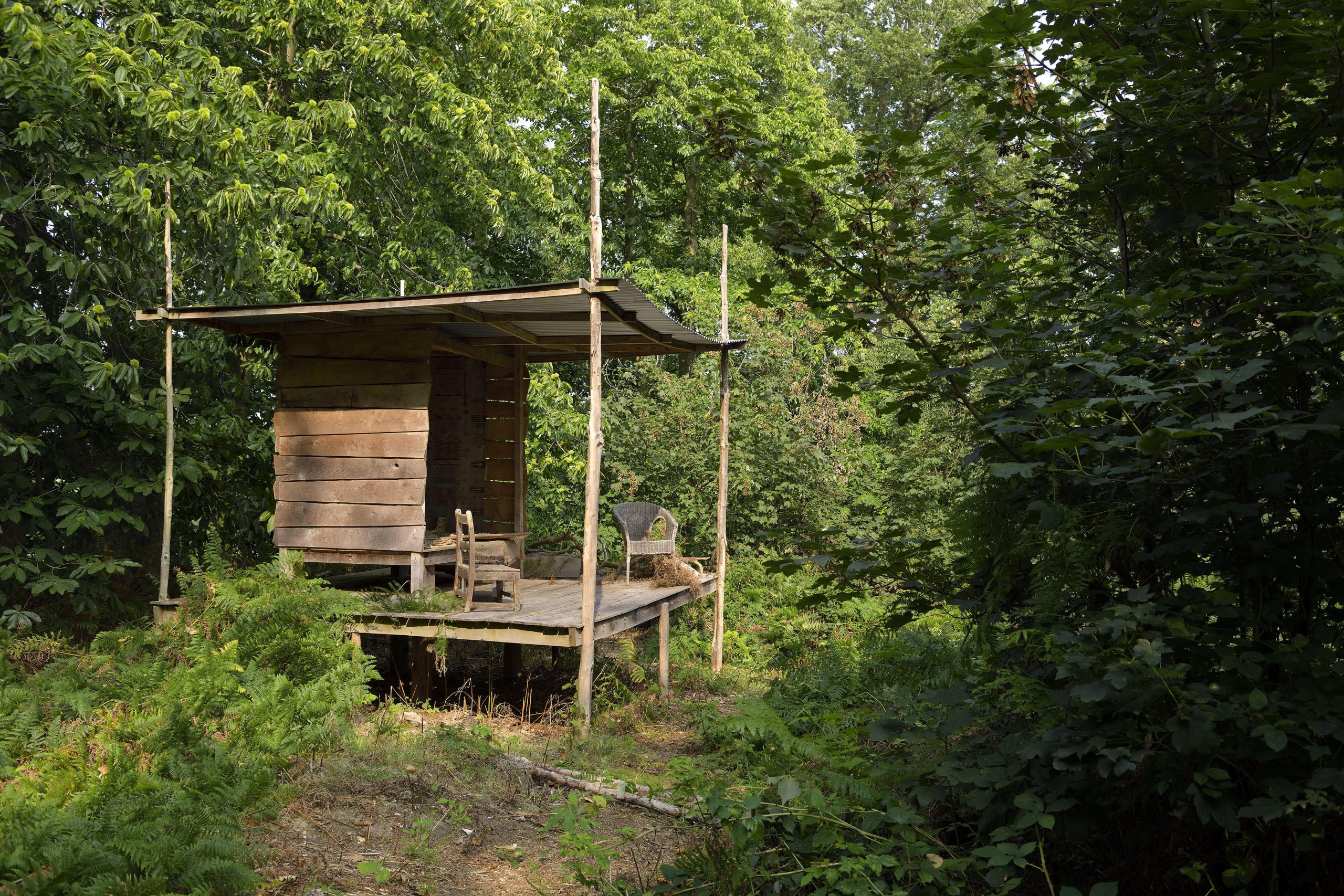
Designed by Charlie Hawkins and made from yew and oakwood from the farm, the hut was built by sculptor Freddy Morris, who then lived in it and created bronze structures from casts of branches found on the woodland floor. Sleeping there one night, Freddy dreamed that his head was being eaten and woke to discover a blue tit pulling out strands of his hair for nesting.
For Jason, there couldn’t have been a better result: ‘The hut was inspired by the notion of tawai, a deep connection to the forest, to a landscape replete with biology of which we are a part, a concept borrowed from the Penan of Sarawak — and the theme of Bruce Parry’s extraordinary film of that name.
'My personal belief is that it’s also about enriching our farmed and residential environments.’
A key to enriching habitats on the farm is hedgerow restoration and Jason has recently installed a Hedge Hut, offered as a residency to artists and writers during the Alde Valley Spring Festival, which celebrates the Arts, writing and local food in a working, farmed landscape.
Bird boxes are incorporated into its supports and the idea is that the hut and its inhabitants become part of the life of the hedge. ‘The main window faces east and you wake up to the sun and the world of the hedge, but you can also see the farmhouse and so remain connected to it.
'This is communal living. We must learn to share and try to reintegrate ourselves into this world of plants and birds.’
Rosie Pearson, Asthall Manor, Oxfordshire
Rosie Pearson grew up at Cowdray, West Sussex, where she had ‘what you could call a natural treehouse’ among its famous avenue of Wellingtonias: ‘One branch was our lift to spring up higher into the tree. Other branches were wide enough for beds. We stamped on puffballs to create smoke for our “fires”.
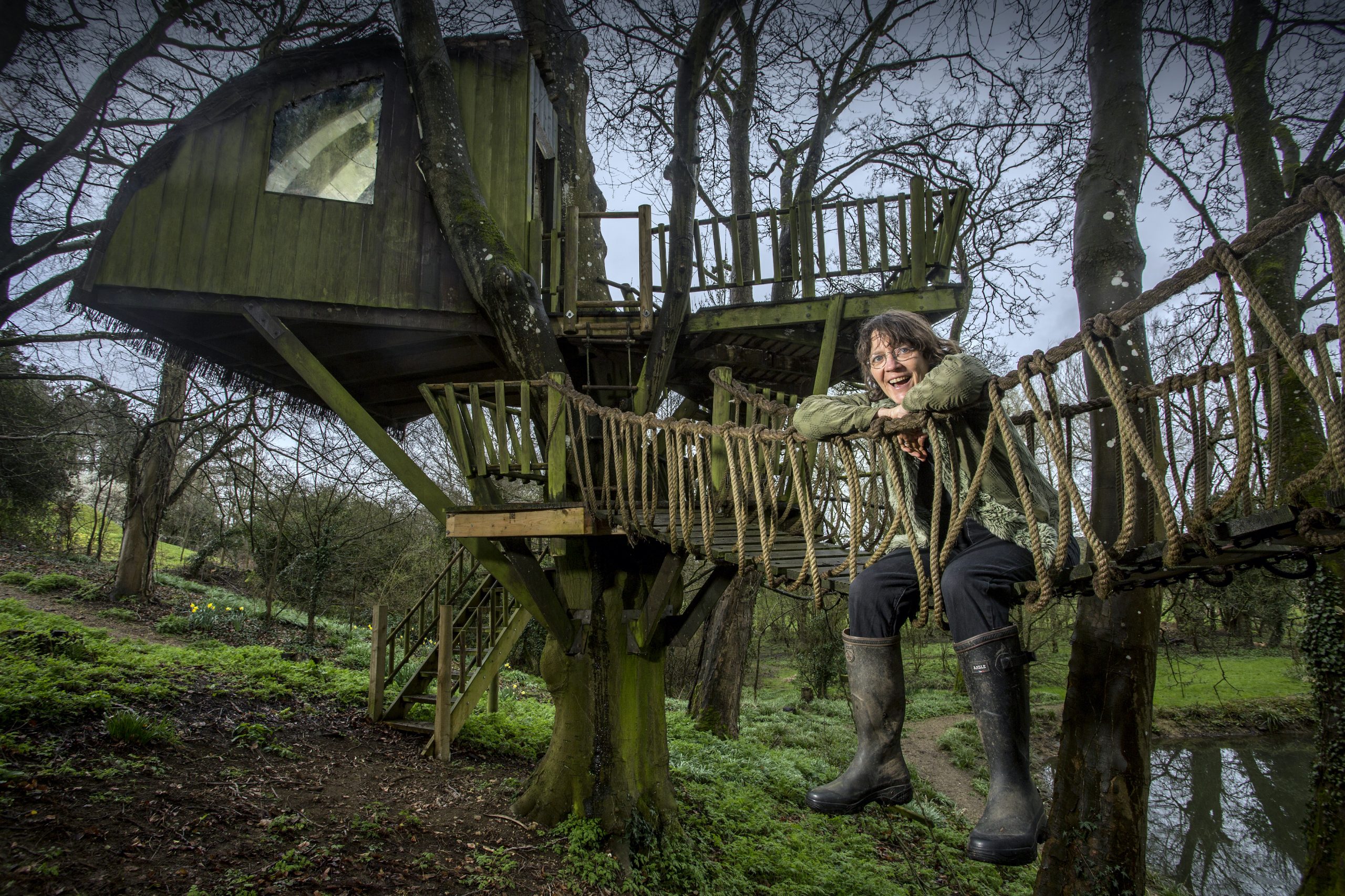
‘My children grew up in Jamaica and our old wooden house there felt like a treehouse, with a veranda encircling it, which the children tricycled round.’
Soon after they moved back to England, Rosie commissioned the treehouse at Asthall, the former home of the Mitford sisters, in 1997–98.
A ‘Star Wars’ fan, she asked the designers to use an Ewok village as their inspiration. Built across two trees connected by a rope bridge, it overlooks the lake with an adjacent thatched hut (designed separately), where they cooked sausages to take up to the treehouse.
Having outgrown the child’s-scale treehouse, one of her daughters recently converted a tree with its top lopped off in a storm into a reading perch — clearly inheriting Rosie’s philosophy that ‘a treehouse should not be so comfortable that it doesn’t feel like you are part of a tree anymore’.
Jessica Douglas-Home, Quenington, Gloucestershire
Standing 28ft above the millstream that runs through her garden, Jessica Douglas-Home’s House in the Trees was inspired by her travels in Czechoslovakia helping dissidents in the 1980s.
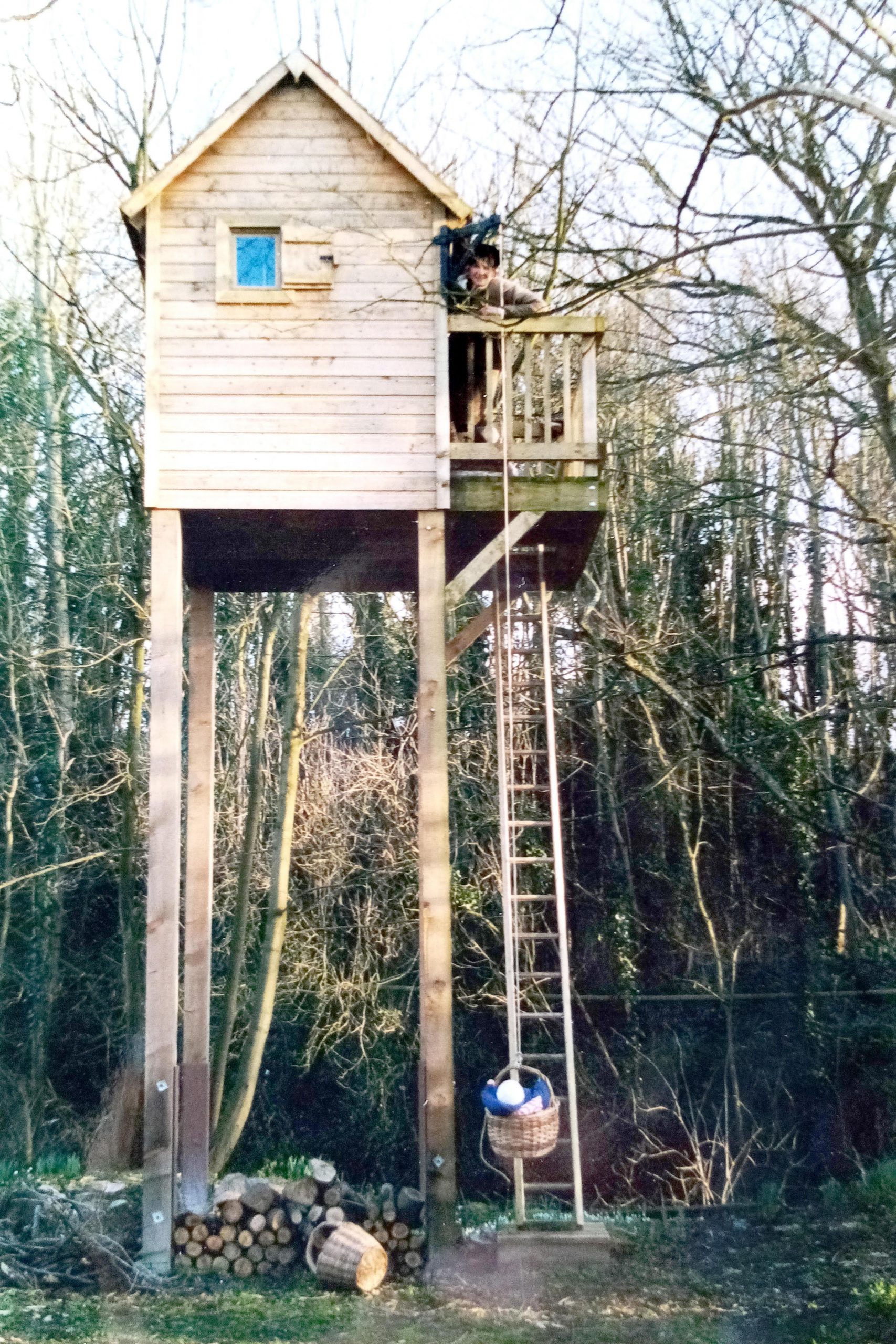
‘The Secret Police placed squat towers on stilts to spy on the writer and future president Václav Havel, near his farmhouse outside Prague. I made mine much taller, so as to be among the birds and their nests in neighbouring trees. I installed a stove, which I bought from gypsies at Stow Fair. Being so high up, I fixed a hook and pulley so I could haul up provisions in a basket.’
So happily distracted was Jessica in her perch that her late husband, Rodney Leach, resorted to writing letters to her, sent up in the basket.
‘On one occasion,’ she remembers, ‘my four-month-old first grandchild was also winched up to me, much to the consternation of his mother.’
Treehouse directory
- Canopy & Stars lists treehouses in which you can stay, both in Britain and abroad (0117–204 7830; www.canopyandstars.co.uk)
- Guy Mallinson offers luxurious treehouse glamping and woodland workshops in Dorset (01460 477771; www.mallinson.co.uk)
- Blue Forest creates bespoke tree-top spaces for work and play (01892 750090; www.blueforest.com)
- High Life Treehouses have a touch of magic; ‘hobbit holes’ are on offer, too (01442 733837; www.highlifetreehouses.co.uk)
- Treetop Co specialises in sustainable builds (07432 071186; www.treetopco.co.uk)
Country Life is unlike any other magazine: the only glossy weekly on the newsstand and the only magazine that has been guest-edited by HRH The King not once, but twice. It is a celebration of modern rural life and all its diverse joys and pleasures — that was first published in Queen Victoria's Diamond Jubilee year. Our eclectic mixture of witty and informative content — from the most up-to-date property news and commentary and a coveted glimpse inside some of the UK's best houses and gardens, to gardening, the arts and interior design, written by experts in their field — still cannot be found in print or online, anywhere else.
-
 The King's favourite tea, conclave and spring flowers: Country Life Quiz of the Day, April 22, 2025
The King's favourite tea, conclave and spring flowers: Country Life Quiz of the Day, April 22, 2025Tuesday's Quiz of the Day blows smoke, tells the time and more.
By Toby Keel
-
 London is the place for me* (*the discerning property buyer)
London is the place for me* (*the discerning property buyer)With more buyers looking at London than anywhere else, is the 'race for space' finally over?
By Annabel Dixon